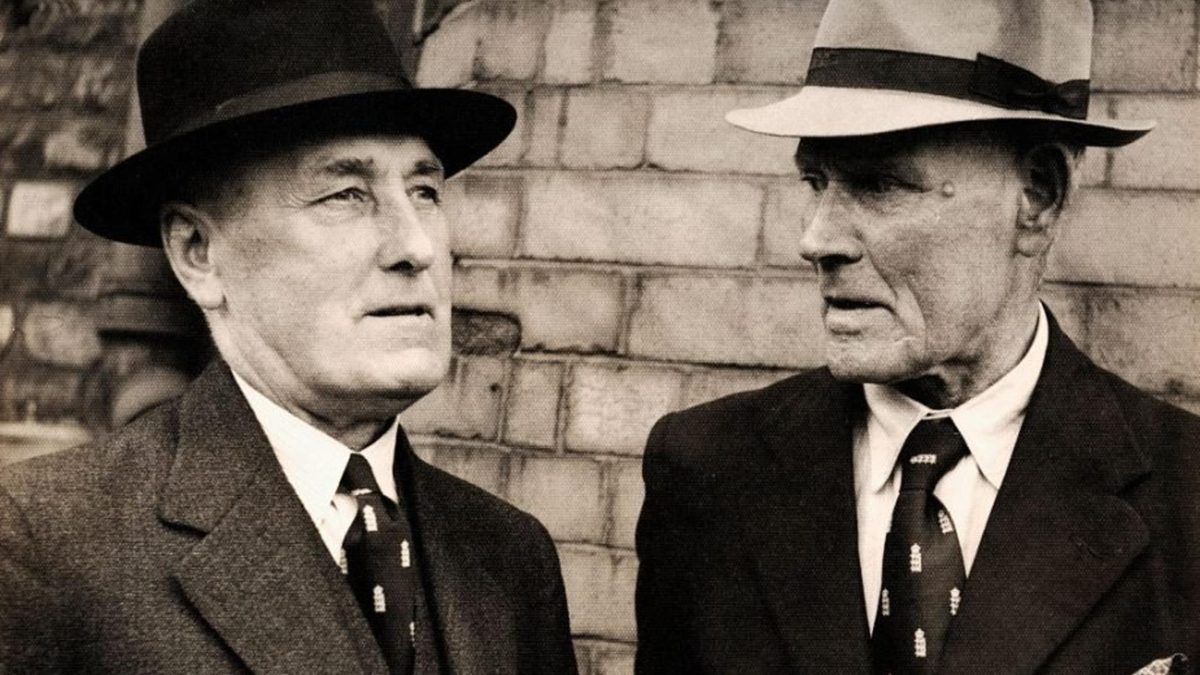
Much more beyond 41,542 first-class runs and 4,923 wickets
The frame capturing Wilfred Rhodes and Sydney Barnes together at Old Trafford in 1951 is one that signifies determination and the weight of responsibility, writes Richard H Thomas.
Celebrity selfies, social media self-promotion, Strictly Come Dancing and after-dinner speeches at the sports club social. When cricketers finally put their pads in the attic, they might pursue some or maybe all of these activities. For the most erudite and articulate, there will be a nicely remunerated spot behind a microphone, and a contented retirement. But not, so it panned out, for these two.
These are two cricketing titans at a Test match: 74-year-old Wilfred Rhodes and Sydney Barnes, three years older. Suited and booted, glorious curmudgeons both, you just know – even if the option existed then – that they weren’t there for free grog in a hospitality tent or to glad-hand corporate guests. They’d be sitting with the hardened fans, griping about over-rates and insipid bowling.
Rhodes’ 39,969 first-class runs are staggering enough, even more so when added to 4,204 first-class wickets. His first Test was WG Grace’s last, and he was still playing for England 31 years later as a wizened 52-year-old. In between, he’d been central in establishing Yorkshire’s cricketing supremacy.
Statistically, Barnes was the junior partner, but the smart money says he was the most devastating bowler of all-time. At not-much-above medium-pace, against South Africa in 1913/14, he took 49 wickets at an average of under 11 in four Test matches. In all, he took 189 wickets in 27 Tests at a miserly 16.43. Each run cussedly conceded as if it were a 10-pound note.
This is not a photograph screaming levity. It’s about determination and the weight of responsibility. On one occasion, when a youngster gave it a bit of long-handle in the name of “fun”, Rhodes, standing at the non-striker’s end, was aghast. “Foon?” he asked incredulously, “we don’t play cricket for foon lad.”
Barnes was as famous for being grouchy as he was for being brilliant, Neville Cardus suggesting “a chill wind of antagonism blew from him on the sunniest day”. Described by CLR James as looking like a man “who has seen as much of the world as he wants to”, Barnes’ career was characterised by pay disputes and tussles with the establishment, who, writes Rob Steen, came to view him “as an impossible bugger whose genius simply wasn’t worth the hassle”. For Barnes, “compromise was poison” continues Steen, and “obedience signified submission”.
A wonderful photograph portraying resilience, steely hearts, flinty determination, and good old-fashioned grumpiness.
First published in June 2016








